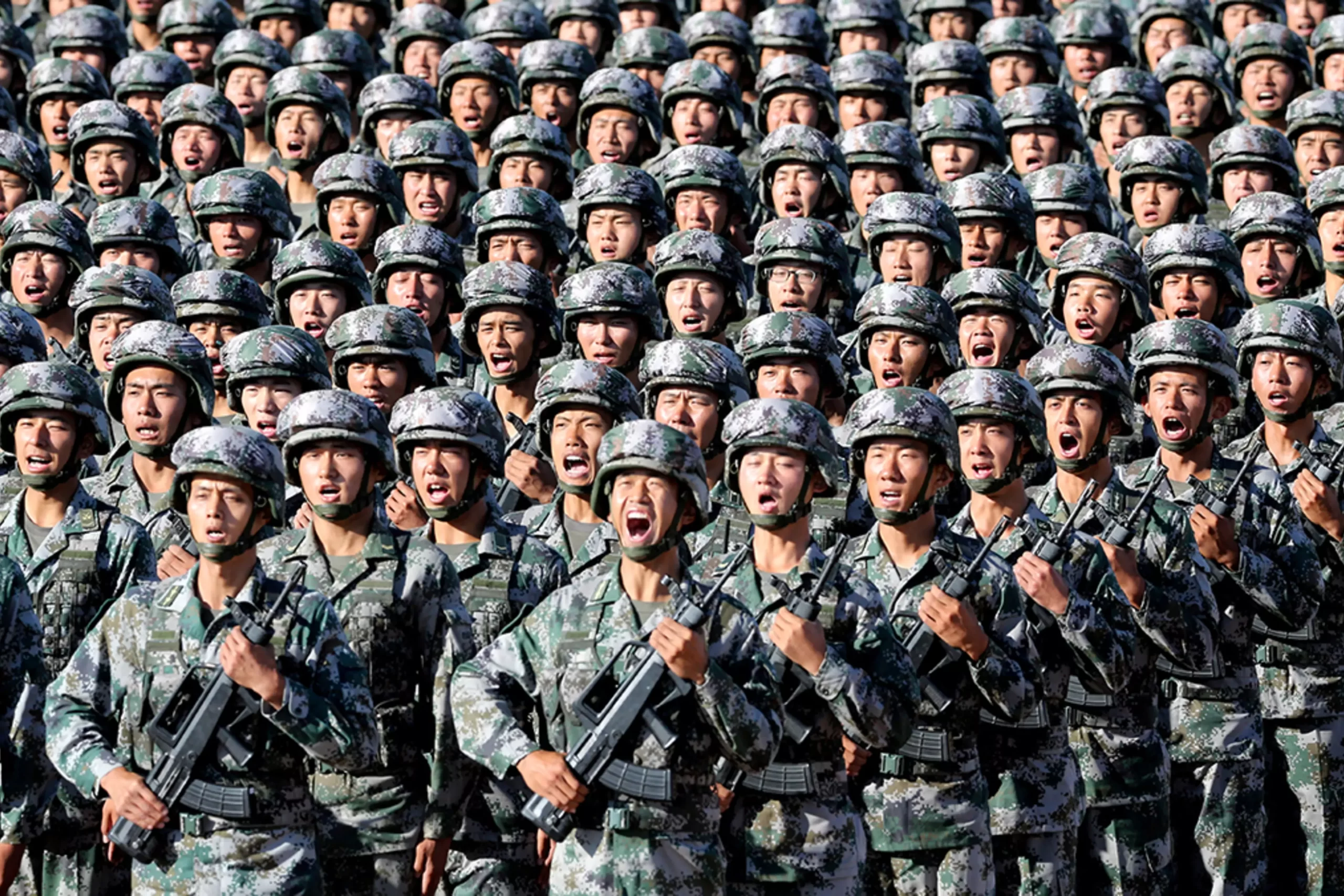
On August 1, citizens of the second largest economy in the world, China, will roll out drums to celebrate the 95th anniversary of the formation of the Chinese People’s Liberation Army (PLA).
Such a milestone provides a germane opportunity for analysts to evaluate PLA’s massive contributions to the revolutionary cause of liberating the Chinese people and creating a new China, as well as steps in safeguarding the country’s sovereignty, security, and territorial integrity since the formation of modern-day People’s Republic of China (PRC) in 1949.
China as a nation has always loved peace. History has revealed that the Chinese have suffered from years of unwarranted aggressions and wars, and have learned the value of peace as well as the pressing need for development. This explains why the country has focused so much on economic development.
To date, China has primarily relied on its economic power to cultivate influence in its immediate neighbourhood and beyond. Under the banner of the Belt and Road Initiative (BRI), Beijing has pledged or invested more than $1 trillion in infrastructure investment in over 60 countries.
With a strong resolution never to inflict any form of suffering on any country, China has been consolidating its military arsenal over the decades, initially at a deliberately slow pace.
From its foundation in 1949, the People’s Republic of China (PRC) has never started any war or conflict. The country has grown from a relatively poor country to being the world’s second-largest economy neither by receiving handouts nor by engaging in military expansion or colonial plunder like other world economic powers.
Growth and development have come through the hard work of its people and its efforts to maintain peace.
China sincerely has always hoped that all countries will choose the path of peaceful development and jointly prevent conflicts and wars.
This is one of the reasons, over the years, that China has remained committed to its Five Principles of Peaceful Coexistence: mutual respect for sovereignty and territorial integrity, mutual non-aggression, non-interference in each other’s internal affairs, equality and mutual benefit, and peaceful coexistence. The country has consistently honoured the rights of nations to independently choose their own development path.
Regrettably, not all nations of the world are transparently committed to such noble goals. So, it becomes foolhardy for China to remain focused on economic development without creating a national defence system that can effectively deter and resist aggression; safeguard national political security, people’s security and social stability.
Since assuming power in 2012, President Xi Jinping has consistently articulated his vision of the Chinese dream which seeks to achieve the great rejuvenation of the Chinese nation. Xi wants to restore China’s historical influence and status by transforming China into a rich, strong and fully-developed power by 2049.
A huge aspect of this dream is the expansion of China’s military capabilities. The Chinese government under Xi has specifically tasked the People’s Liberation Army (PLA) to complete military reform and modernization by 2035, to become a world-class military by 2050.
In order to achieve these ambitious goals, the Chinese government has undertaken significant measures.
Under Xi’s government, the PLA has undertaken a lot of reforms to strengthen its engagement capabilities. Some of these measures include increasing the size of the navy and air force; the creation of five theatre commands to enhance joint operations capabilities; and the formation of a Strategic Support Force that focuses on space, cyber, and electronic warfare.
The PLA has also been tasked to accelerate the development of military intelligence, with a focus on emerging technologies and especially artificial intelligence as vital tools for contemporary warfare.
The Chinese government is also encouraging its commercial and defence industries to collaborate in strengthening the country’s military. This drive for “civil-military fusion” fits squarely into China’s larger strategy, as mapped out in its Made in China 2025 initiative to build China into a self-sufficient tech powerhouse.China’s Academy of Military Science has been mandated to make sure that this happens, even if means involving “civil-military fusion”. China is now fully committed to developing contemporary military strategies and disruptive technologies – especially artificial intelligence, to achieve its ultimate military goals.
Given China’s growing external interest, the PLA Navy (PLAN) has begun developing capabilities to operate on distant seas. The country opened its first foreign military base in Djibouti in 2017 and has established the ability to protect Chinese interests and citizens in foreign countries, as revealed by the non-combatant evacuation operations it carried out in Libya and Yemen a few years ago.
China is equally advancing in missile technology, nuclear weapons, and artificial intelligence. This points out that a remarkable shift in the global balance of military power is clearly underway.
With this pace, China was able to overtake the US to become the largest navy in the world.
Even with this, China is still poised to expand its navy much further. A Former People’s Liberation Army Senior Colonel, Zhou Bo, of Tsinghua University in Beijing, is reported to have said that “it is critically important for China to strengthen its navy to counter the sea-based threats that it faces”.
In terms of military expenditure globally, China is the second highest spender, behind the US. The Chinese government calls it the “politics of peaceful defence.” The country is aiming at placing itself in a position where other countries will be forced to think “thrice” before ever contemplating attacking her. These were the words of Fu Ying, China’s deputy foreign minister and spokeswoman of the National People’s Congress.
From 2005 – 2009, China’s defense spending grew at a rate of 15 – 20 percent annually, before reaching the current stable growth rate of 10 – 11 percent.
Despite this remarkable expenditure by China, it is interesting to note that the percentage to the country’s GDP is relatively low compared with other global powers. According to Bonn University’s Centre for Global Studies, China’s military spending only accounts for around 1.3 – 1.8 percent of the country’s GDP, while in other industrialized countries, such as Germany, France and the United Kingdom, spending is between 2.5 – 3.5 of the GDP. In the past 15 years, the US has spent a total of 4.5 – 5 percent of its GDP on the military.
Under President Xi Jinping, China has become more diplomatically assertive and shown an increased willingness to back up its rights with obvious military prowess.
In China, there are more than 915,000 active-duty troops in its ranks, dwarfing the US, which has about 486,000 active soldiers, according to the latest Pentagon China Military Power Report. The army has also been stocking its arsenal with increasingly high-tech weapons, with its submarines having the capability to launch nuclear-armed missiles.
The air force has also grown into the largest in the Asia-Pacific region and the third largest in the world, with more than 2,500 aircraft and roughly 2,000 combat aircraft, according to an annual report by the US’s Office of Secretary of Defense published last year.
Most notably, the air force now possesses a fleet of stealth fighter jets, including the J-20, China’s most advanced warplane. It was independently developed and designed to compete with the US-made F-22.
Globally, China is also stepping up weapons’ exports to other developing countries with the goal of developing warmer relationships with friendly nations amid the regional competition. Indeed, China’s military wares have made commendable inroads in the global market, and its products have found willing buyers all over the world, particularly its unmanned aerial vehicle (UAV), commonly known as Chindrones.
According to the Stockholm International Peace Research Institute, China’s weapons exports were sold mostly to Pakistan, Bangladesh, and Algeria over the past decade.
Over the same time period, China has also been one of the world’s leading exporters of armed unmanned aerial vehicles (UAVs), with customers including the United Arab Emirates and Saudi Arabia, according to SIPRI.
China’s navy, for example, has more ships than the US – with 360 vessels – but the fleet consists mostly of smaller vessels. It has only two large aircraft carriers, the Liaoning and Shandong, with the third aircraft carrier Type 003 still under construction.
In spite of the impressive build-up, China is opposed to interference in the internal affairs of others, abuse of the weak by the strong and any attempt to impose one’s will on others. China advocates partnerships rather than alliances and does not join any military bloc. It stands against aggression and expansion, and opposes arbitrary use or threat of arms.
The development of China’s national defence aims have always been clearly spelt out- to meet its rightful security needs and contribute to the growth of the world’s peaceful forces. History proves and will continue to prove that China will never choose the beaten track of big powers in seeking hegemony. No matter how much it might develop, China will never threaten any country or seek any sphere of influence.
China’s national defence aims to deter and resist aggression; to safeguard national political security, people’s security and social stability; to oppose and contain “Taiwan independence”; to crack down on proponents of separatist movements such as “Tibet independence” and the creation of “East Turkistan”; to safeguard national sovereignty, unity, territorial integrity and security; to protect China’s maritime rights and interests; to safeguard China’s security interests in outer space, electromagnetic space and cyberspace; to protect China’s overseas interests and to support sustainable development of the country.
In China’s quest for military excellence, if there are things the country’s leadership learnt from history it will include what America’s first President George Washington said in his first speech to Congress in 1790, “To be prepared for war is one of the most effectual means of preserving peace.”




